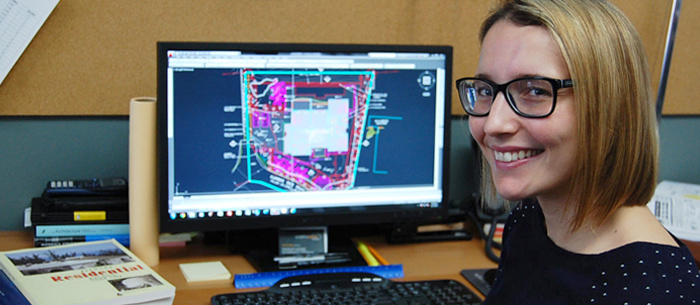Why did you want to become an architect?
I've always been really interested in the way things go together, and I loved to visit projects that my father, a contractor, was working on. I'm from Bermuda, and I've always been inspired by our unique way of building. I'm very interested in how different cultures use architecture to address their specific conditions. For instance, in Bermuda we build our houses out of a concrete masonry unit (CMU)—a direct result of our lack of forests and a response to our susceptibility to hurricanes. We also use specially treated white roofs to catch rainwater in large tanks under our houses. Everything from the top of roofs to the water tank below our house reflects our values and traditions.
How long did it take you to complete the IDP and ARE?
I completed my Bachelor of Science in Architecture from Wentworth Institute of Technology in 2009. At the time, Wentworth was changing their curriculum from a five-year B.Arch to a four-year Bachelor of Science (plus one year). Since the school was still undergoing the accreditation process, I took a year off between my undergraduate and graduate degrees and interned in Bermuda under the supervision of an U.S. architect. While abroad, I was able to get a good start on my IDP credit.
I returned to Wentworth the following year, and completed my M.Arch in May 2011. Following graduation, I began interning with a multi-family developer in Cambridge, MA, under the guidance of several architects. About six months after graduation I began taking the ARE. Being international, and on a one-year post-graduation work visa, I wanted to make sure I got the exams well underway—in case I was unable to get an H1-B visa the following year. Luckily, I was able to obtain a three-year work visa and completed the exam in 2013. It took me 15 months to complete the ARE, and shortly after, I completed IDP. In the end, I earned my license just over two years after graduating from the M.Arch program.
What was your strategy for navigating the path to licensure, and how did you stick with it?
My strategy was to seek out other people in my situation. Wentworth did a great job of explaining the how-tos of getting licensed and made sure we were all enrolled with NCARB before our first co-op assignment junior year. When I returned to Bermuda in the summer, I worked with the Institute of Bermuda Architects to start a student group. Plus, I took every opportunity to meet other Bermudian architecture students studying in the United States, United Kingdom, and Canada. Since I started taking the AREs shortly after graduation, I was able to stay in that student mind-frame. I also found it helpful to concurrently complete the ARE and IDP. Especially since there was often a lot of overlap between the work I was doing as an intern and the exam divisions.
What was the biggest hurdle you faced as an intern?
The biggest hurdle I faced was getting construction observation hours. I petitioned every chance I got for opportunities to be on site. Eventually I started going to sites before and after work to take photos and make notes that I would review with my supervisors. Some of those notes proved very useful, and soon I was regularly invited to site meetings.
How does having a license distinguish you from other design professionals?
There are many unlicensed design professionals in Bermuda, some of whom, unfortunately, do not uphold the standards of professional practice. The Institute of Bermuda Architects regularly hears from clients about disputes in which they have little to no recourse. Being licensed shows potential clients that there is a standard they can, and should, demand from design professionals.
What advice do you have for young professionals on the path to licensure?
\Create a support network. The path to licensure can seem never-ending, and it helps to have a network of peers who are in various stages of the process. You'd be surprised how many people are going through the same things as you and have the same questions and fears. Also, it's ok to take a detour. I have some friends who pursued careers in different areas of the industry before coming back to architecture. One of my best friends got a job as a sustainability coordinator with a construction firm right after graduation and had three years of amazing experience before staring the IDP. That “detour” now puts her in a unique position to have a breadth of knowledge in an area that architects might typically rely on outside consultants to provide. It also gives her a unique perspective on projects.
While it sometimes seems like the process is convoluted and insurmountable, there is a reward in seeing it through. You learn so much during your internship period that you couldn't possibly understand in the context of academia. I think architecture schools teach us how to be thoughtful and resourceful designers. The IDP teaches us how to be practical and efficient professionals. And the ARE confirms that we are well versed enough to hold the title of architect.
Are there any architecture blogs or websites that you regularly follow?
Having worked in the multi-family sector for three years, I really like to read Curbed. Even though I've recently moved back to Bermuda, I like to keep up-to-date on what's happening in the Boston housing market. While studying for the ARE, I relied heavily on ARE blogs to help find appropriate study materials and deal with post-test anxiety. AREndurance was one of my favorites!
